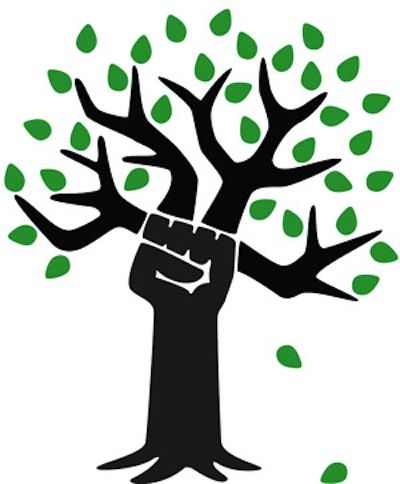 |
| Ecology: Concept |
Ecology is the scientific study of ecosystems, which are generally defined as local units of nature, consisting of the aggregate of plants, animals, the physical environment, and their interactions.
Ecosystems consist of both biotic (living) and abiotic (nonliving) components. Biotic components include plants, animals, and microorganisms. The abiotic components are the physical factors of the ecosystem. The roots of ecology can be traced to the writings of early Greek philosophers such as Aristotle and Theophrastus, who were keen observers of plants and animals in their natural habitats.
During the nineteenth century, German biogeographer Alexander von Humboldt and English naturalist Charles Darwin wrote detailed descriptions of their travels. They recognized that the distribution of living things is determined by such factors as rainfall, temperature, and soil.
  |
The word “ecology” was first proposed in 1869 by the German biologist Ernst Haeckel. It soon came to be defined as “environmental biology,” or the effect of environmental factors on living things.
At the beginning of the twentieth century, American botanist Henry Cowles established plant succession as a major concept of ecology. During the next few decades, F. E. Clements helped establish plant ecology as a recognized branch of biology. Animal ecology developed separately and slightly later.
Reflecting the independent development of plant and animal ecology, most ecological studies in the early twentieth century were concerned with either plant or animal communities but not both. Furthermore, most were descriptive rather than being involved with explanations of fundamental ecological processes.
 |
| ecological processes |
However, other lines of research during this time increasingly emphasized interrelationships among all life-forms, especially those within lakes. From such beginnings emerged the concept of the ecosystem. The term, first used by British ecologist Arthur G. Tansley in the 1930’s, is now considered the foundation stone of ecology.
Ecosystems at Work
Ecologists place all the organisms of an ecosystem into three categories: producers, consumers, and decomposers. Producers include algae and green plants that, because of their ability to generate biochemical energy by means of photosynthesis, produce all the food for the ecosystem.
   |
Consumers (herbivores, omnivores, and carnivores) are animals that feed directly on the producers. Decomposers are bacteria and fungi that break the large organic molecules of dead plants and organisms down into simpler substances.
Ecosystems are dynamic. Each day, matter (nutrients) cycles through ecosystems as consumers eat producers, then moves to decomposers, which release nutrients into the soil, air, and water. Producers absorb nutrients as they photosynthesize, thus completing the cycle. Energy flows from the sun to producers, then consumers, and finally to decomposers.
 |
| Ecosystems at Work |
Other changes in ecosystems occur over longer periods of time. Large-scale disturbances such as fire, logging, and storms initiate gradual, long-term changes known as ecological succession. Following a major disturbance, an ecosystem of pioneer species exists for awhile but is soon replaced by a series of other temporary ecosystems.
Eventually a permanent, or climax, ecosystemis formed, the nature of which is primarily determined by climate. Although generally considered to be stable, climax communities are subject to gradual changes caused by climatic fluctuations or subsequent disturbances.
Classifying Systems and Study
Ecologists attempt to name and classify ecosystems in a manner similar to the way that taxonomists name and classify species. Ecosystems may be named according to their dominant plants, such as deciduous forests, prairies, and evergreen forests. Others, such as coral reefs, are named according to their dominant animals. Physical factors are used to name deserts, ponds, tidal pools, and other ecosystems.
The science of ecology has developed a few major branches as well as several areas of specialization, with theoretical, or academic, ecology on one hand and applied, or practical, ecology on the other.
Among the specialties that have developed from theoretical ecology are autecology (study at the level of individuals or species), synecology (study at the community level), and the ecosystems approach, which is largely concerned with the flow of energy and the cycling of nutrients within ecosystems.
As one might expect, theoretical ecologists are generally associated with universities, where their basic research contributes to the understanding of a great diversity of ecosystems.
Applied ecologists are employed by a variety of governmental and environmental agencies as well as by universities. Their primary objective is to apply fundamental principles of ecology and related disciplines to the solution of specific problems. Forestry, although it developed independently from ecology, may be considered a specialty within the field of applied ecology.
Foresters must be knowledgeable of a wide range of factors that influence the accumulation of tree biomass. Wild life management, once concerned with only game species, has been extended to include a wide range of nongame animal species as well. Another branch of applied ecology is conservation biology.
 |
| problems contribute to a loss of biodiversity |
Concerned with biodiversity in all its aspects, conservation biologists attempt to prevent the extinction of threatened species around the globe.Disturbed ecosystems are rehabilitated by scientists working in a related field called restoration ecology.
The efforts of ecologists, whether theoretical or applied, represent attempts to understand and solve the many environmental challenges that humankind faces. Climate change, pollution, and other global and local problems contribute to a loss of biodiversity. All are made worse by increasing human activities.
